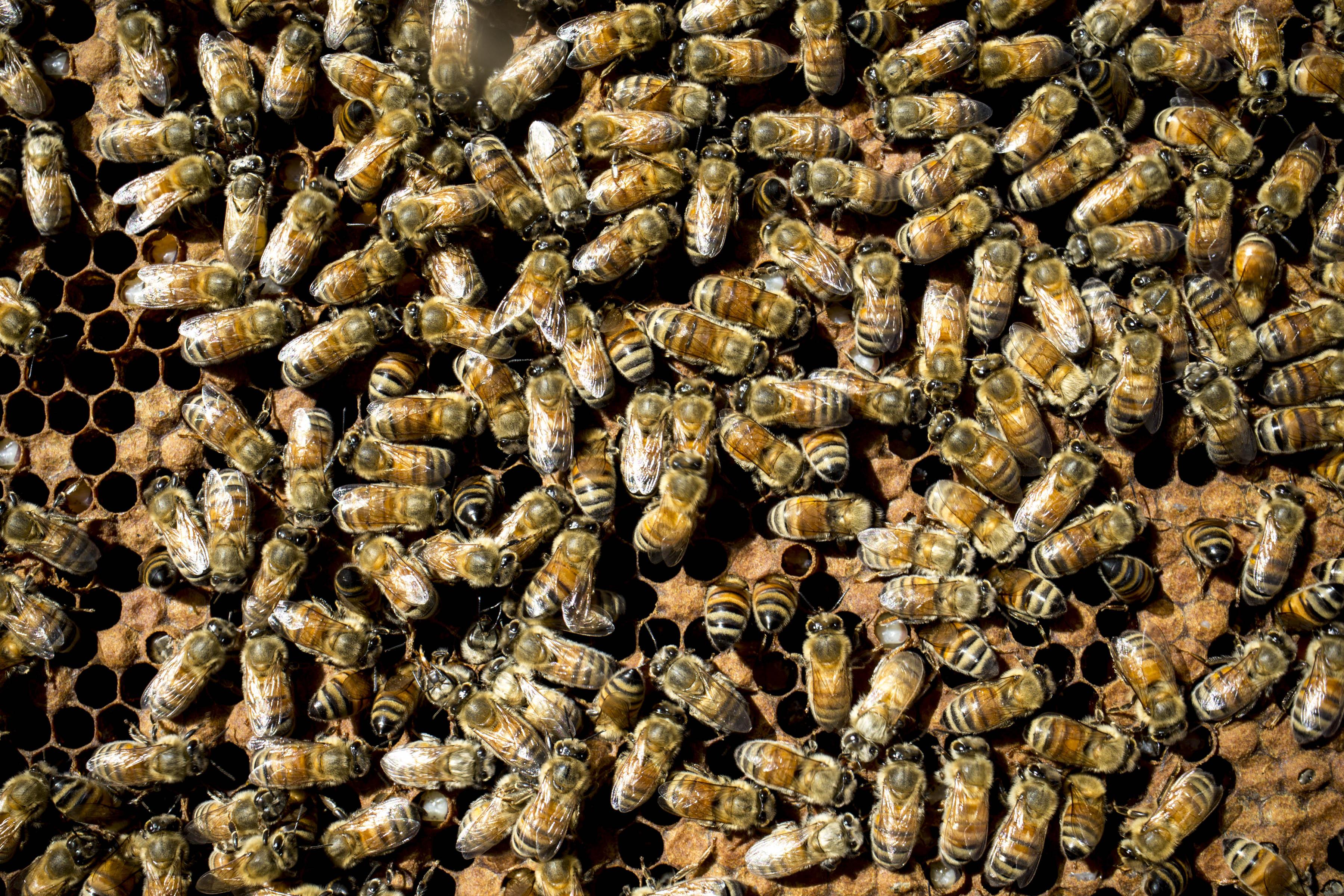PHOENIX — Many Arizonans know the sound: A loud buzzing from above could mean a bee swarm is near, and the insects are on the move.
In Maricopa County, which includes Phoenix and Mesa, fire and medical responders will get one to two calls a week about swarms of bees, Rural/Metro Fire spokesman Shawn Gilleland said.
Two bee swarms Thursday, one near Mesa and one in north Phoenix, left one man dead and another hospitalized.
What are bee swarms? When are they common?
A bee swarm, as intimidating as it may appear, is a natural reproduction of the colony, according to the American Bee Journal.
Swarms occur when a new queen bee is produced and the colony is searching for a new hive.
Most Arizona bee swarms are made up of more aggressive Africanized honeybees, according to a University of Arizona department of entomology report. In fact, all Arizona honeybees are presumed to be Africanized, which is a hybrid of European and African honeybees.
These bees are also referred to as "killer bees" because they are known to attack people and animals that may have wandered into their territory.
"The AHB (Africanized honeybee) is not particular about hive location, leading to more common encounters between it and humans," the Arizona report said.
What are the swarms like?
Swarm behavior can be unpredictable. A swarm of up to 20,000 bees followed a car in England on Thursday after its queen was believed to be trapped in the trunk.
These bee swarms can be found virtually everywhere in Arizona and are known to attack people who come too close to them.
Swarms are most commonly seen in the spring, but colonies are known to travel year-round in search of the perfect hive. Triple-digit temperatures are not necessarily a deterrent.
"Bees can stand temperatures much higher than you might guess," Walt Wright, a beekeeper known for researching bee swarms, said in an article at Beesource.com, an online forum for beekeepers.
A bee swarm can be made up of 40,000 to 60,000 bees but can grow exponentially if hives are not checked by experts, Bisbee's "Killer Bee Guy," Reed Booth, told the Republic.
Why do swarms attack?
Similar to the behavior of other insects and animals, when bees attack, they are protecting their territory and their queen.
Generally, bees are misconceived as aggressive insects when, in fact, they attack only when they feel provoked, experts said on Beesource.com.
However, Africanized bees are more aggressive in nature compared with regular honeybees, Scottsdale Fire and Medical spokesman Mark DeBruyckere said.
If the bees feel their queen is in danger, they will do whatever they can to protect her, which sometimes leads to severe attacks.
How dangerous are bees?
A bee-swarm attack can be deadly even when someone is not allergic.
A 23-year-old Elton, La., man was hiking with a friend in Usery Mountain Parknear Mesa on Thursday and died after being stung more than 1,000 times, according to the Maricopa County Sheriff's Office. Also on Thursday, a 51-year-old man in Phoenix was transported to a hospital with respiratory distress and numerous welts after a bee attack, according to the Phoenix Fire Department.
Home remedies can treat bee stings, but bee-swarm attacks often call for visits to the hospital.
On average, someone who is not allergic to bees can stand seven to 10 stings per pound of body weight, Scottsdale Fire and Medical spokesman DeBruyckere said.
For someone who is allergic, one bee sting can be fatal.
What first responders do for bee-sting victims
Gilleland, the Rural/Metro Fire spokesman, said the one to two emergency calls per week might not be swarm attacks; they could be the result of people noticing a swarm in the area and calling it in, he said.
"Especially at the time of year when swarms are moving. You may see them while you're driving, then all of a sudden they are all on your windshield," Gilleland said.
While responding to a bee-swarm attack, fire crews will send out a team to assess the situation. They then may call in an ambulance or other reinforcements to treat victims and stabilize the swarm.
If bee-sting victims show signs of anaphylactic shock, such as loss of breath or swelling of the throat, they will be sent to the hospital immediately, Gilleland said.
DeBruyckere, the Scottsdale Fire and Medical spokesman, said fire crews will remove the stingers as quickly as they can to prevent more venom from entering the body.
"If someone is stung more than 15 times, they should go to the hospital," DeBruyckere said.
What to do when encountering a bee swarm
The most important thing to do when encountering a bee swarm is not to panic, bee experts said.
Often, deaths are caused not from the bee stings but from people panicking — for example, accidentally running in front of a car or staying underwater too long to avoid a swarm and drowning, reports said.
Additional tips from the experts so you don't attract bees' attention:
• Avoid wearing dark, loose clothing or shiny objects while hiking.
• Avoid wearing perfumes, cologne or strong scent.
• Don't make jerky movements near hives.
• Do not swat at bees.

![pni honey bees 1026 [image : 73769660]](http://www.gannett-cdn.com/-mm-/2836a0b8db8010ae104b26b0ad4625ef35b620af/c=398-0-3201-2400/local/-/media/2015/10/11/Phoenix/B9319192234Z.1_20151011015153_000_GQ9C68HF0.1-0.jpg)

